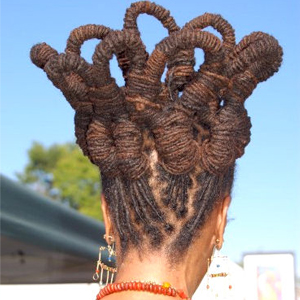
Locs are rope-like strands of hair that are formed by matting. The earliest evidence of locs dates back to India in 1800BC. The first evidence of the style in Africa came around 500 BC. During the 1600-1800s, Africans who brought the style to the Americas (and other places around the globe) could not perform their regular hair grooming practices, and therefore arrived looking unkept. After traveling months on ships with no hygiene available, it's unsurprising that their hair appeared matted and locked. It's said that slave owners referred to the "dreadful" sight of the captives, thus the term "dreadlocks" and its negative association.

Cultivated locs can be started by coiling, braiding, twisting, or palm-rolling hair. "Locs go through a series of stages—typically five—but the forming process happens during phase two, which is called the buttoning stage," says Hunt. "They can be formed physically with: two-strand twists, interlocking, or the coil method."

Coded by: Domonique Smith